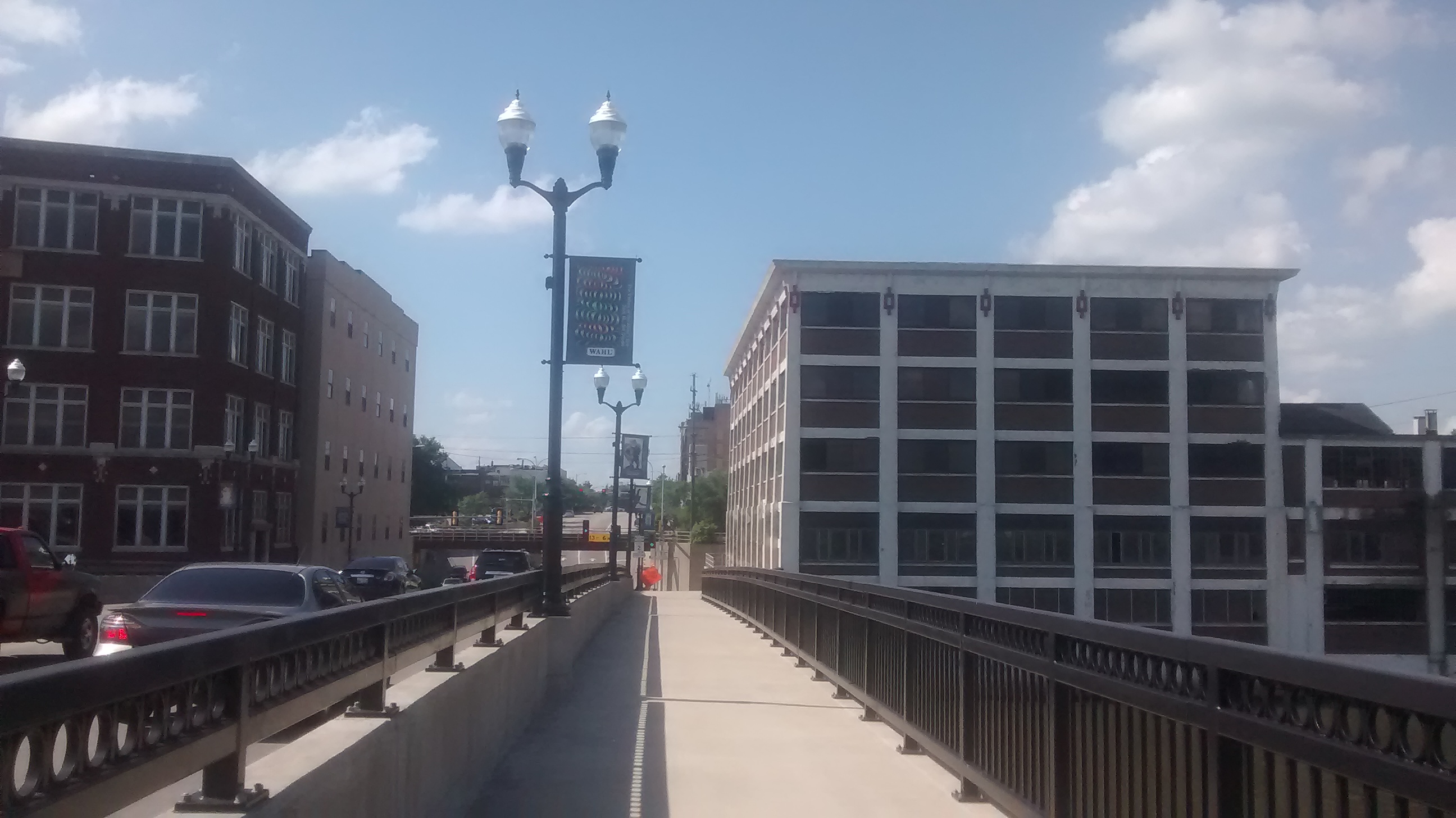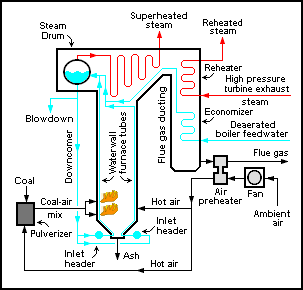|
Empire (1901 Automobile)
The Empire was an American automobile manufactured from 1901 until 1902. A product of Sterling, Illinois, it featured a vee-twin Steam engine geared to its right-hand rear wheel. It had a rectangular, transverse mounted boiler with horizontal tubes across the chassis. Coachwork was of the motor buggy style. Built by the Empire Manufacturing Co. (soon to be renamed the Empire Automobile Co.) in Sterling, Illinois, it was offered for only $750; the popular Oldsmobile Curved Dash __NOTOC__ The gasoline-powered Oldsmobile Model R, also known as the Curved Dash Oldsmobile, is credited as being the first mass-produced automobile, meaning that it was built on an assembly line using interchangeable parts. It was introduced by ... cost $650. The essentially same car was built 1901-1902 by the Sterling Automobile & Engine Co. When this company failed to pay their factory mortgage the company was sold by the sheriff's office for $1,300 and manufacture halted. References *David Bur ... [...More Info...] [...Related Items...] OR: [Wikipedia] [Google] [Baidu] |
Automobile
A car or automobile is a motor vehicle with wheels. Most definitions of ''cars'' say that they run primarily on roads, seat one to eight people, have four wheels, and mainly transport people instead of goods. The year 1886 is regarded as the birth year of the car, when German inventor Carl Benz patented his Benz Patent-Motorwagen. Cars became widely available during the 20th century. One of the first cars affordable by the masses was the 1908 Model T, an American car manufactured by the Ford Motor Company. Cars were rapidly adopted in the US, where they replaced animal-drawn carriages and carts. In Europe and other parts of the world, demand for automobiles did not increase until after World War II. The car is considered an essential part of the developed economy. Cars have controls for driving, parking, passenger comfort, and a variety of lights. Over the decades, additional features and controls have been added to vehicles, making them progressively more comple ... [...More Info...] [...Related Items...] OR: [Wikipedia] [Google] [Baidu] |
Sterling, Illinois
Sterling is a city in Whiteside County, Illinois, United States. The population was 14,782 at the 2020 census, down from 15,370 in 2010. Formerly nicknamed "Hardware Capital of the World", the city has long been associated with manufacturing and the steel industry. Geography Sterling lies along the north bank of the Rock River, opposite its twin city, Rock Falls. The terrain is mostly flat. The land immediately outside of town is almost entirely farmland. The prairie soil is part of one of the world's most fertile growing areas. According to the 2010 census, Sterling has a total area of , of which (or 96.08%) is land and (or 3.92%) is water. Demographics As of the census of 2000, there were 15,596 people, 6,234 households, and 3,946 families residing in the city. The population density was . There were 6,596 housing units at an average density of . The racial makeup of the city was 84.36% White, 2.25% African American, 0.41% Native American, 0.81% Asian, 0.01% Pacific Islan ... [...More Info...] [...Related Items...] OR: [Wikipedia] [Google] [Baidu] |
Steam Engine
A steam engine is a heat engine that performs mechanical work using steam as its working fluid. The steam engine uses the force produced by steam pressure to push a piston back and forth inside a cylinder. This pushing force can be transformed, by a connecting rod and crank, into rotational force for work. The term "steam engine" is generally applied only to reciprocating engines as just described, not to the steam turbine. Steam engines are external combustion engines, where the working fluid is separated from the combustion products. The ideal thermodynamic cycle used to analyze this process is called the Rankine cycle. In general usage, the term ''steam engine'' can refer to either complete steam plants (including boilers etc.), such as railway steam locomotives and portable engines, or may refer to the piston or turbine machinery alone, as in the beam engine and stationary steam engine. Although steam-driven devices were known as early as the aeo ... [...More Info...] [...Related Items...] OR: [Wikipedia] [Google] [Baidu] |
Boiler (power Generation)
An industrial boiler, originally used for supplying steam to a stationary steam engine A boiler or steam generator is a device used to create steam by applying heat energy to water. Although the definitions are somewhat flexible, it can be said that older steam generators were commonly termed ''boilers'' and worked at low to medium pressure () but, at pressures above this, it is more usual to speak of a ''steam generator''. A boiler or steam generator is used wherever a source of steam is required. The form and size depends on the application: mobile steam engines such as steam locomotives, portable engines and steam-powered road vehicles typically use a smaller boiler that forms an integral part of the vehicle; stationary steam engines, industrial installations and power stations will usually have a larger separate steam generating facility connected to the point-of-use by piping. A notable exception is the steam-powered fireless locomotive, where separately-generated st ... [...More Info...] [...Related Items...] OR: [Wikipedia] [Google] [Baidu] |
Buggy (automobile)
Buggy is generally used to refer to any lightweight automobile with off road capabilities and sparse bodywork. Most are built either as a kit car or from scratch. History Originally used to describe very lightweight horse-drawn vehicles for one or two persons, the term was extended to lightweight automobiles as they became popular. As automobiles became increasingly sophisticated, the term briefly dropped out of use before being revived to describe more specialised off road vehicles. Types * Bennett buggy, a Canadian, depression era term for an automobile pulled by a horse * Dune buggy, designed for use on sand dune A dune is a landform composed of wind- or water-driven sand. It typically takes the form of a mound, ridge, or hill. An area with dunes is called a dune system or a dune complex. A large dune complex is called a dune field, while broad, f ...s * Baja Bug, a modified Volkswagen Beetle * Lunar Roving Vehicle, Moon buggy, nickname for the Lunar Roving ... [...More Info...] [...Related Items...] OR: [Wikipedia] [Google] [Baidu] |
Oldsmobile Curved Dash
__NOTOC__ The gasoline-powered Oldsmobile Model R, also known as the Curved Dash Oldsmobile, is credited as being the first mass-produced automobile, meaning that it was built on an assembly line using interchangeable parts. It was introduced by the Oldsmobile company in 1901 and produced through 1903; 425 were produced the first year, 2,500 in 1902, and over 19,000 were built in all. When General Motors assumed operations from Ransom E. Olds on November 12, 1908, GM introduced the Oldsmobile Model 20, which was the 1908 Buick Model 10 with a stretched wheelbase and minor exterior changes. It was a runabout model, could seat two passengers, and sold for US$650 ($ in dollars). While competitive, due to high volume, and priced below the US$850 two-seat Ford Model C "Doctor's Car", it was more expensive than the Western 1905 Gale Model A roadster at US$500. The Black sold for $375, and the Success for US$250. It was built as a city car for short distance driving, while the la ... [...More Info...] [...Related Items...] OR: [Wikipedia] [Google] [Baidu] |
Krause Publications
Krause Publications is an American publisher of hobby magazines and books. Originally a company founded and based in Iola, Wisconsin, they relocated to Stevens Point, Wisconsin, in April 2018. The company was started by Chester L. Krause (19232016) upon the publication in October 1952 of the first issue of '' Numismatic News''. In the coin collecting community the company is best known for its '' Standard Catalog of World Coins'', a series of coin catalogs commonly referred to as ''Krause-Mishler'' catalogs or simply ''Krause'' catalogs; they provide information, pricing, and Krause-Mishler (KM) numbers referring to coin rarity and value. Krause-Mishler (named for Krause and longtime employee Clifford Mishler) numbers are the most common way of assigning values to coins. The first edition was published in 1972. In addition, they established the Coin of the Year Award, first issued in 1984, for excellence in coinage design. In the paper money collecting community the company i ... [...More Info...] [...Related Items...] OR: [Wikipedia] [Google] [Baidu] |
Defunct Motor Vehicle Manufacturers Of The United States
Defunct (no longer in use or active) may refer to: * ''Defunct'' (video game), 2014 * Zombie process or defunct process, in Unix-like operating systems See also * * :Former entities * End-of-life product An end-of-life product (EOL product) is a product at the end of the product lifecycle which prevents users from receiving updates, indicating that the product is at the end of its useful life (from the vendor's point of view). At this stage, a ... * Obsolescence {{Disambiguation ... [...More Info...] [...Related Items...] OR: [Wikipedia] [Google] [Baidu] |
Steam Cars
Steam is a substance containing water in the gas phase, and sometimes also an aerosol of liquid water droplets, or air. This may occur due to evaporation or due to boiling, where heat is applied until water reaches the enthalpy of vaporization. Steam that is saturated or superheated is invisible; however, "steam" often refers to wet steam, the visible mist or aerosol of water droplets formed as water vapor condenses. Water increases in volume by 1,700 times at standard temperature and pressure; this change in volume can be converted into mechanical work by steam engines such as reciprocating piston type engines and steam turbines, which are a sub-group of steam engines. Piston type steam engines played a central role in the Industrial Revolution and modern steam turbines are used to generate more than 80% of the world's electricity. If liquid water comes in contact with a very hot surface or depressurizes quickly below its vapor pressure, it can create a steam explosion. Typ ... [...More Info...] [...Related Items...] OR: [Wikipedia] [Google] [Baidu] |






